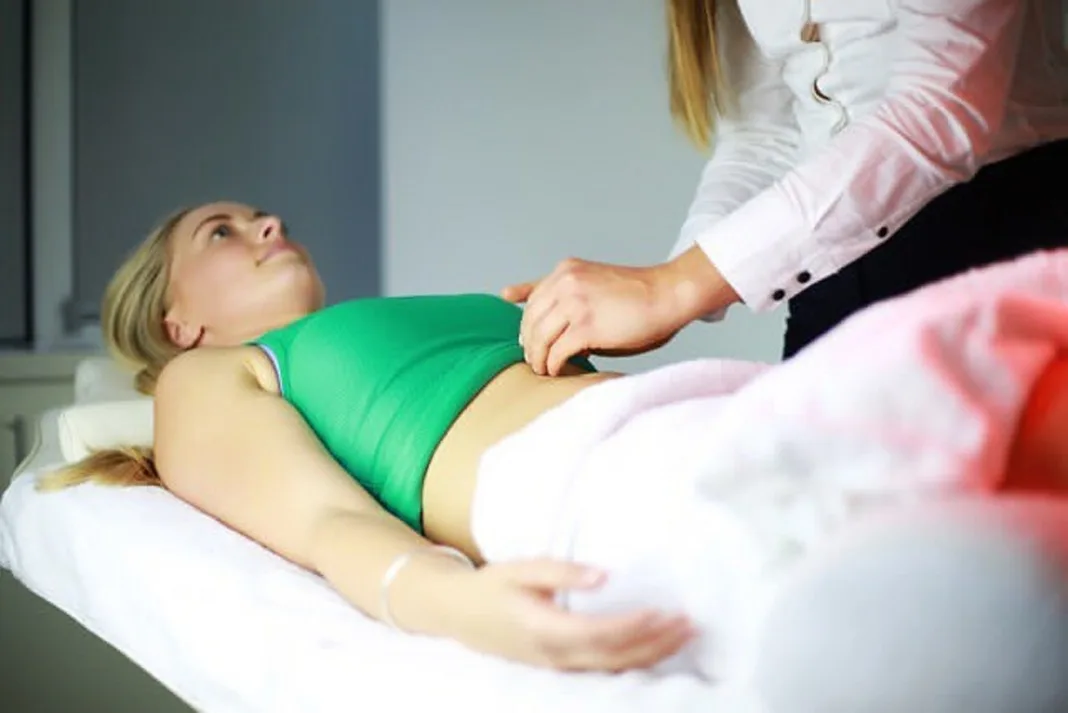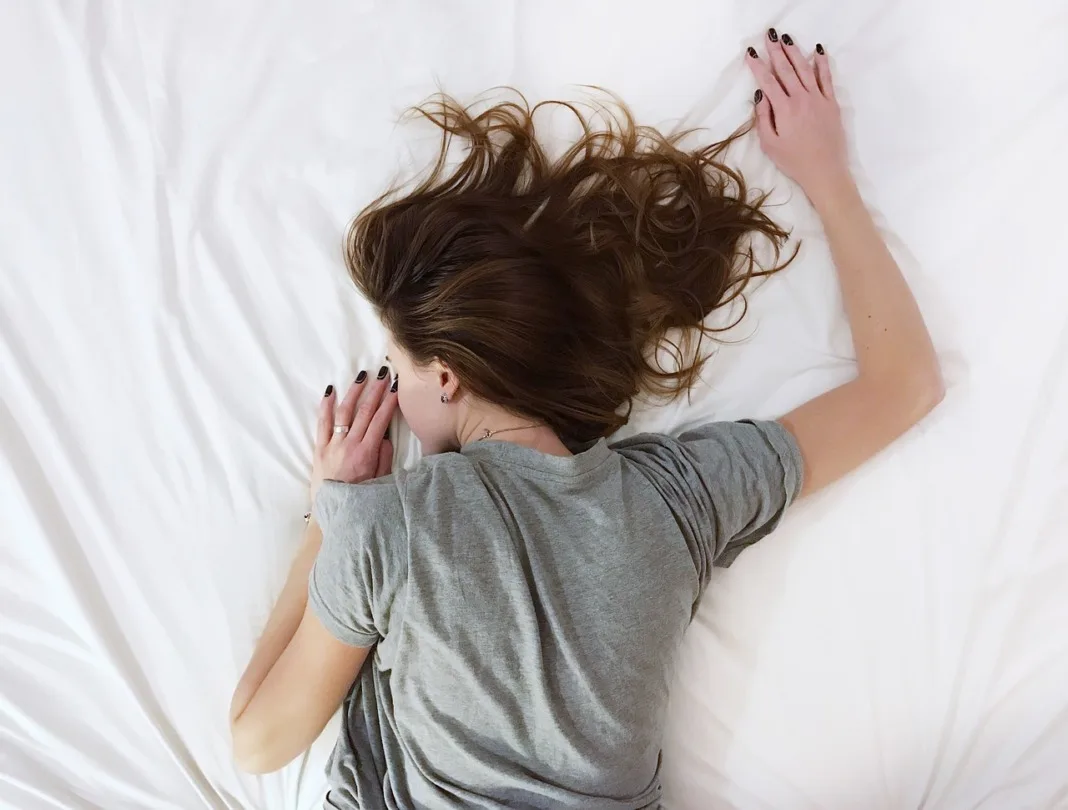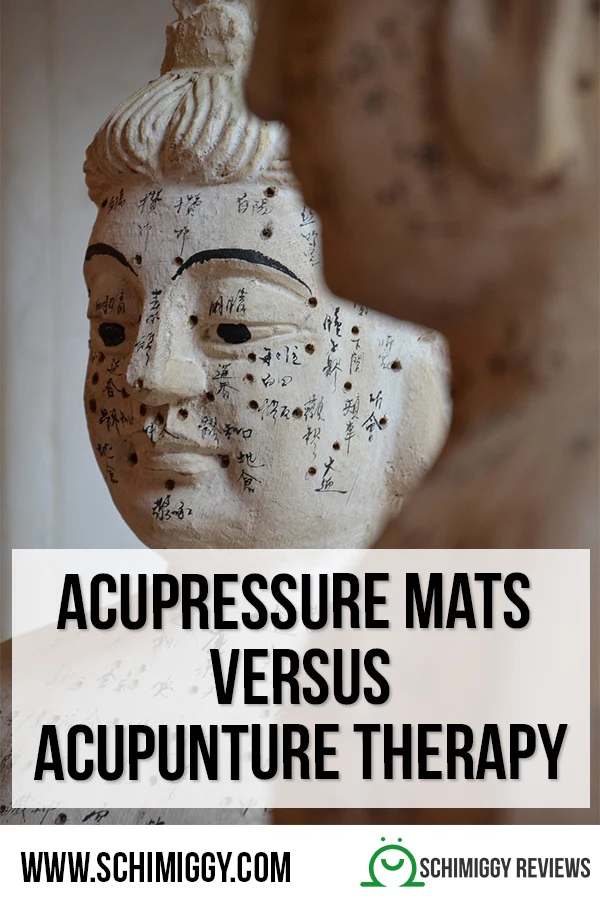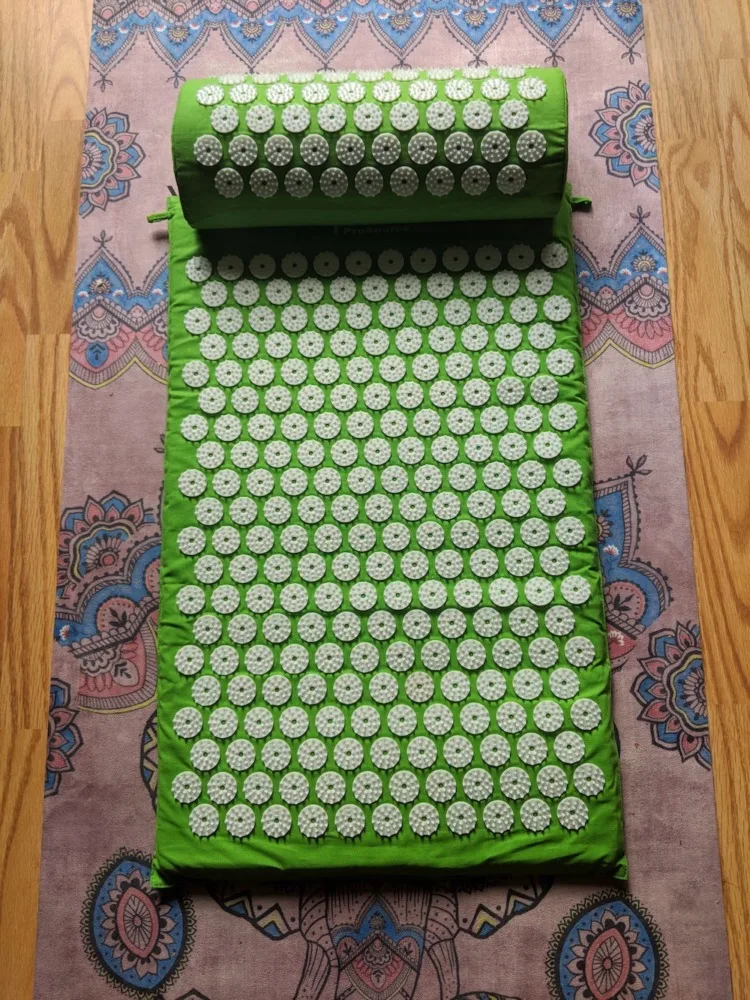You’ve probably heard about acupuncture but might not know exactly what it is or its benefits. Over 10 million acupuncture treatments are administered annually.
Acupuncture is an ancient Chinese practice that brings balance to the Chinese meridians or the path through which your energy flows. Blockages along the meridian causes anan imbalance and can result in discomfort, pain and even illness.
My partner tried it for his chondritis and it provided pain relief which improved his quality of life. I received a ProSource acupressure mat that we toyed around with.
The mat became comfortable after a few sessions. I would only use it while wearing a tank top because the spikes can be a little overwhelming. After my foray into “acupressure therapy,” I decided to compare it against the real deal
I reached out to a few acupuncturists in the Seattle area and eventually found a treatment center that was convenient for me (10 minutes from my workplace) and accepted my insurance.
Initially, the sound of needles piercing my skin sounded horrifying. Natalie did a great job at explaining the process to me and what to expect afterwards. After 4 sessions, I was looking forward to getting poked because each session was so relaxing!
Today we’ll discuss the following:
- Do Acupressure Mats Work?
- What are the Cons and Pros of Acupressure Mats?
- Why Should Someone Utilize One Method Over the Other?
- What are the Benefits of Acupuncture Therapy?
- How Does Acupuncture Therapy Work?
Acupressure Mats VERSUS Acupuncture Therapy
Do Acupressure Mats Work?
I consulted with Ben and Natalie, two Seattle-based licensed acupuncture therapists and they had a lot of say about Acupressure Mats VERSUS Acupuncture Therapy.
Acupressure mats and acupuncture therapy are two very different things, explains Natalie Willits of Acupuncture Northwest & Associates. To understand the benefits of both, you first need to understand the basics of Chinese medicine and the acupuncture system.
The main idea is that we have 12 channels, or meridians, that run all throughout our body – front and back, in the ears, on the top of the head, down the limbs, soles of the feet, etc. The meridians are there to facilitate a free flow of energy through these channels to bring balance to the body.
Each channel has a certain set of acupuncture points that can be accessed. These points may be used on their own, or in combination with one another to cause a different physical or energetic reaction in the body.

What are the Cons and Pros of Acupressure Mats?
Pros
Natalie explains that the benefit of acupressure mats is that they access many points at once, essentially waking up the meridian system. This can help get energy moving and improve circulation. Any treatment of a specific condition, however, would not be achieved through these mats.
Ben Dorfman of Seattle Acupuncture and Coaching adds to the conversation and states the pros of the mats are convenience and cost. You only have to buy it once and many people may believe that don’t have to go into a practitioner for continued treatment. However, that is not the case.
Cons
Ben goes further to explain that the cons of an acupressure mat are that in some way they can be very gimmicky because it stimulates certain known acupuncture points that have helpful effects on the body but acupuncture and how that whole system of medicine works is so much more complicated and more dynamic than just a few localized acupuncture locations. And it also promotes this idea that people can learn and understand how a certain medicine works without ever having any training. And last, they miss out on the effectiveness and connection of working with another person for healing.
- Acupuncture is the practice of inserting small needles into the skin to access the points. The needle is a stronger stimulation compared to acupressure mats that never penetrate the epidermis.
- When laying down on a mat you are only accessing one side or plane of your body at a time, completely missing the whole other half of the meridians system. Remember there are acupuncture points all over the head, core, and limbs, not just on the back.
- You are unable to treat specific conditions with acupressure mats, as this requires an in-depth knowledge of the meridian system and how to combine and apply acupuncture points.
Understanding the differences will give you a better idea of how acupressure mats and actual acupuncture therapy are very different from one another. Acupressure mats may enhance actual acupuncture therapy, but it will never replace it.
Why Should Someone Utilize One Method Over the Other?
Acupressure mats are fine if someone wants to stimulate the meridians and get energy moving. Laying on a mat for ten minutes may help wake up channels, but the benefits really stop there. Mats don’t hurt, but they are a far cry from actual acupuncture. Waking up your meridians can also be achieved by gentle exercise (such as swimming, walking, or yoga) or by tapping along the inner and outer sides of your arms, legs, chest and abdomen. Some people have even incorporated Tai Chi into yoga and other practices.
Ben states that in terms of which one to utilize over the other – this seems subject to the person. You miss out on a person to person healing exchange when you only use the mat. But for someone who is afraid of needles and can’t get over that fear or someone who just wants something they can do by themselves, he can see how the mat would be an attractive option. However, acupressure mats can never replace the power of being in person with an expert who can help you understand your body more deeply and lead you through the healing process.
What are the Benefits of Acupuncture Therapy?
Acupuncture therapy is amazing because it can help a wide variety of conditions. There are over 300 acupuncture points on the body, meaning there are endless combinations to help a multitude of health complaints. Some of the most common things we treat in the clinic are: chronic muscle and joint pain, pain from acute injuries, sleep problems, digestive health, emotional upset or imbalance such as anxiety or depression, stress, headaches and migraines, menstrual cycle irregularities, infertility, pre and postnatal care, and autoimmune conditions. It’s a lot! Many people also feel a sense of calm or relaxation during and after treatments.
Acupuncture is very beneficial for body pain and inflammation- any and all body pain seems to respond very well to acupuncture treatments and any areas where the body is inflamed. It is also great for nervous system related ailments like anxiety, depression, stress and insomnia. Most clients leave feeling like their nervous system is calmer and therefore these specific challenges seem better. It is also great for fertility. These are the most common things people use acupuncture for although there are definitely more things acupuncture works on within the body, especially if people are willing to use Chinese herbs.
Acupuncture therapy should be used if someone is looking for help resolving a specific medical condition, symptom, or want a more effective way of bringing their body into balance. Acupuncture sessions also include the benefit of talking over your main complaints with a licensed health care professional.

How Does Acupuncture Therapy Work and What to Expect?
Your first session will be 90 minutes. Each time you switch therapists, you will need to go through the 90-minute session so that your therapist can do a comprehensive overview of your health and concerns. Apart from acupuncture therapy, your practitioner may offer Chinese herbal therapy, cupping, guasha, massage, and nutritional and lifestyle recommendations.
Things to know before a session – getting acupuncture should not be painful – any needle that feels sharp or stabbing would be considered an improperly placed needle and you should alert your therapist immediately. Most people feel either nothing when the needles go in or a mellow, achy feeling that isn’t painful. It is very relaxing to have acupuncture once the needles are in and people rest on the table. Many people even fall asleep.
On average people rest on the table with the needles in for about 15-20 minutes. When clients do private acupuncture care, like in my office, they are under a sheet which allows access to different areas of the body for treatment. Therefore clients don’t need to worry about wearing certain clothes. Just dress comfortably.
Where your therapist places a needle depends on your health concerns. I received a needle in between my eyes while I was sick and congested. I could immediately feel my sinuses clear as I laid on the treatment table. I also fell asleep within minutes of getting pierced. It was relaxing and I felt well rested afterward.
Usually, people need to come in between 6-12 treatments for the most effective results, ideally twice per week for the first two to three weeks. After your initial session, you should feel some pain relief. It is common to have relief for a few hours or days after the first session, but discomfort will usually start to creep back in.
It takes a few sessions for the relief to hold. Natalie explains that with a continuous treatment plan, “We’re basically helping your body break the old pattern of pain and move towards balance.”
If you have health insurance and depending on your insurance plan, you may need a referral for acupuncture. We have Premera and are allowed 15 sessions annually and do not need a referral. If your insurance offers treatment sessions, I highly recommend trying it out.
I hope this article answered a lot of your questions about acupuncture therapy and more. If you have any comments or questions, feel free to send me a message. Thanks for tuning in!
If you liked this post, please PIN it!

Thank you for visiting today! If you found this encouraging or informative, please connect with us on Instagram or TikTok. Sign up for our monthly newsletter for updates and more. We promise we won't spam you! Feel free to unsubscribe anytime. If you're a brand and want to work with us, please visit this page to get in touch.



Chloe Daniels | Clo Bare
Thursday 28th of March 2019
So interesting and helpful! I had never heard of acupressure mats before. It's good to read a side by side comparison, and now I'm really interested in trying out acupuncture. I don't have a specific condition, although I wonder if perhaps it would help me with sleep. Very helpful!
kelly
Thursday 28th of March 2019
This was really interesting to read and I hadn't even heard of acupressure mats before, so thank you!! xx